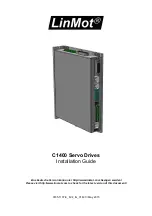
Energy savings
P
shaft
=P
shaft output
Illustration 4.9 Flow Distribution over 1 Year
175HA209.11
60
50
40
30
20
10
H
s
0
100
200
300
400
(mwg)
B
C
A
750rpm
1050rpm
1350rpm
1650rpm
0
10
20
30
(kW)
40
50
60
200
100
300
(
m
3
/h
)
(
m
3
/h
)
400
750rpm
1050rpm
1350rpm
1650rpm
P
shaft
C
1
B
1
A
1
Illustration 4.10 Pump Performance
m
3
/
h
Distri-
bution
Valve regulation
Frequency converter
control
% Hours Power
Consump-
tion
Power
Consump-
tion
A
1
- B
1
kWh
A
1
- C
1
kWh
350
5
438
42.5
18.615
42.5
18.615
300 15
1314
38.5
50.589
29.0
38.106
250 20
1752
35.0
61.320
18.5
32.412
200 20
1752
31.5
55.188
11.5
20.148
150 20
1752
28.0
49.056
6.5
11.388
100 20
1752
23.0
40.296
3.5
6.132
Σ
100 8760
275.064
26.801
Table 4.5 Pump Performance
4.3 Control Examples
4.3.1 Better Control
When a frequency converter is used for controlling the
flow or pressure of a system, improved control is obtained.
A frequency converter can vary the speed of the fan or
pump, obtaining variable control of flow and pressure.
Furthermore, a frequency converter can quickly adapt the
speed of the fan or pump to new flow or pressure
conditions in the system.
Achieve simple control of process (Flow, Level or Pressure)
using the built-in PI control.
4.3.2 Smart Logic Control
A useful facility in the frequency converter is the smart
logic control (SLC).
In applications where a PLC is generates a simple
sequence, the SLC can take over elementary tasks from the
main control.
SLC is designed to act from events sent to or generated in
the frequency converter. The frequency converter then
performs the pre-programmed action.
4.3.3 Smart Logic Control Programming
The smart logic control (SLC) comprises a sequence of
user-defined actions (see
13-52 SL Controller Action
)
executed by the SLC when the associated user-defined
event
(see
13-51 SL Controller Event
) is evaluated as TRUE
by the SLC.
Events
and
actions
are each numbered and are linked in
pairs called states. This means that when
event [1]
is
fulfilled (attains the value TRUE),
action [1]
is executed.
After this, the conditions of
event [2]
is evaluated, and if
evaluated TRUE,
action [2]
is executed and so on. Events
and actions are placed in array parameters.
Only one
event
is evaluated at any time. If an
event
is
evaluated as FALSE, nothing happens (in the SLC) during
the present scan interval and no other
events
are
evaluated. This means that when the SLC starts, it
evaluates
event [1]
(and only
event [1]
) each scan interval.
Only when
event [1]
is evaluated TRUE, the SLC executes
action [1]
and starts evaluating
event [2]
.
It is possible to program from 0 to 20
events
and
actions
.
When the last
event/action
has been executed, the
sequence starts over again from
event [1]/action [1]
.
shows an example with 3
events/actions
:
Application Examples
VLT
®
DriveMotor FCP 106 and FCM 106 Design Guide
40
MG03M102 -
08/2015
4
4
Summary of Contents for VLT DriveMotor FCM 106
Page 2: ......
















































